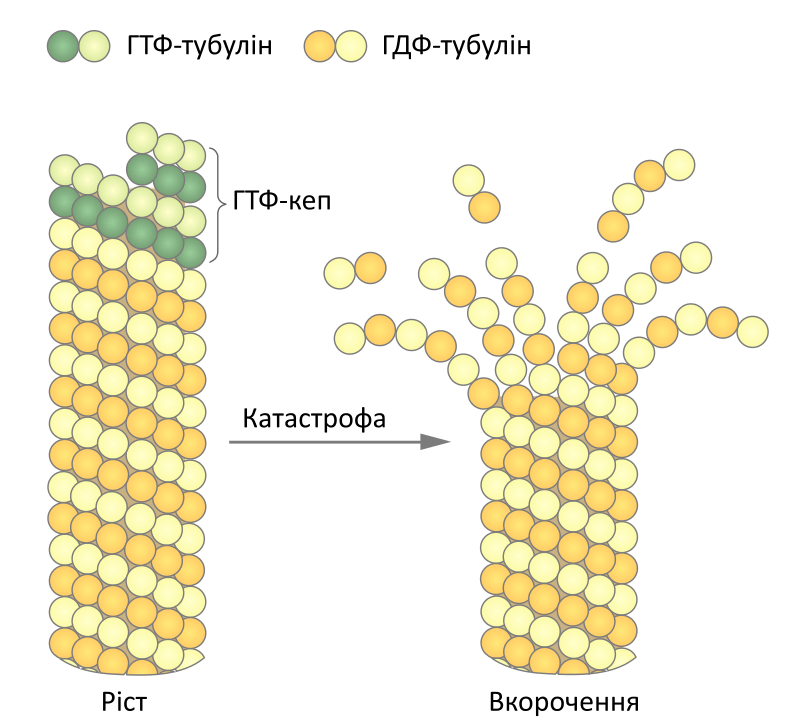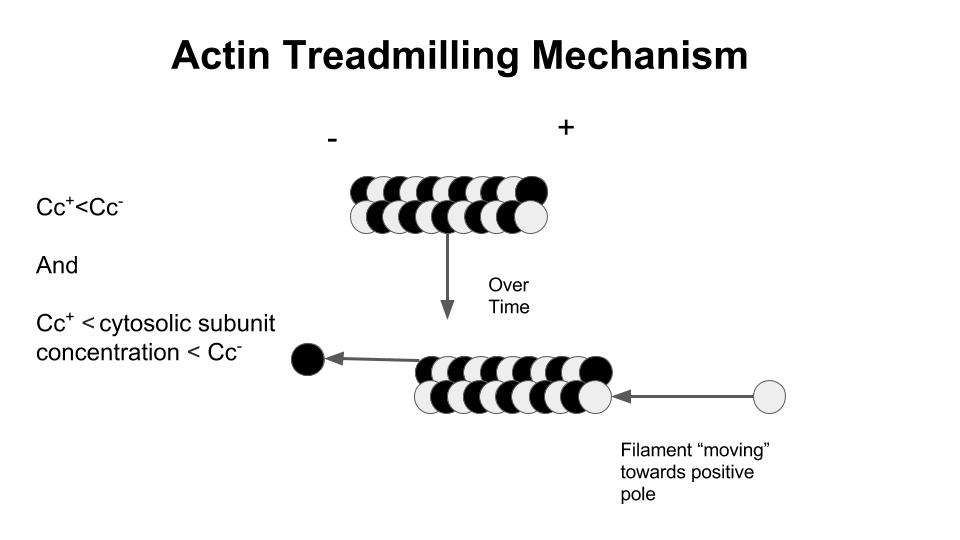What is the Difference Between Dynamic Instability and Treadmilling
Table of Contents
The key difference between dynamic instability and treadmilling is that dynamic instability occurs when microtubules assemble and dissemble at one end, while treadmilling occurs when one end polymerizes, and the other end dissembles.
Microtubules are dynamic cellular polymers. They regulate many cellular activities that are essential to the human body. They are cell division, mitosis, adhesion, directed migrations, cell signaling, vesicle and protein delivery back and forth from the plasma membrane, polymerization, and remodeling of cellular organization and cell shape. The cytoskeleton comprises microtubules, intermediate filaments, and actin filaments. They remake or reorganize themselves in response to external signals that regulate cell activities. Dynamic instability and treadmilling are two phenomena occurring in many cellular cytoskeletal filaments.
CONTENTS
1. Overview and Key Difference
2. What is Dynamic Instability
3. What is Treadmilling
4. Similarities – Dynamic Instability and Treadmilling
5. Dynamic Instability vs Treadmilling in Tabular Form
6. Summary – Dynamic Instability vs Treadmilling
What is Dynamic Instability?
Dynamic instability allows the cells to reorganize the cytoskeleton rapidly when needed. Microtubules contain unique dynamic features. Generally, a subset of microtubules rapidly grows while others shrink. This combination of shrinking, growth, and rapid transitions between two states is called dynamic instability. Dynamic microtubules have a limited lifespan, so bundles of microtubules are in the recreation process. The growth and shrinkage processes of microtubules are active processes and consume energy. This makes microtubules adapt faster to changing environments. This also allows them to make structural arrangements in response to cellular needs.

Figure 01: Dynamic Instability
Microtubules are built up of protein tubulin subunits bound to guanosine triphosphate (GTP), which is an energy carrier. The cells consume energy to maintain a high GTP-tubulin concentration for polymerization. This process is rapidly associated with the ends of microtubules and facilitates the growth of microtubules. After the incorporation of subunits into microtubules, GTP hydrolyzes to guanosine diphosphate (GDP), releasing energy. GDP-tubulin does not curl outwards while trapped in microtubules. Microtubules grow while the ends are stable. However, when ends begin to separate, an expansion takes place. This results in an energy release in tubulin subunits as microtubules rapidly shrink.
What is Treadmilling?
Treadmilling occurs in many cellular cytoskeleton filaments, especially in actin filaments and microtubules. This takes place when the length of one filament grows while the other end shrinks. This results in a filament section that moves across the cytosol or stratum. That is also due to the removal of protein subunits constantly from the filaments at one end while protein subunits are added from the other end. The two ends of the actin filament differ in the addition and removal of subunits. The plus ends with faster dynamics are called barbed ends, and the minus ends with slower dynamics are called pointed ends. Elongation of actin filaments takes place when G-actin (free actin) binds to ATP. Generally, the positive end is associated with G-actin. The binding of G-actin into F-actin takes place with the regulation of critical concentration.

Figure 02: Actin Treadmilling
Critical concentration is the concentration of G-actin or microtubules that remain at an equilibrium rate without any growth or shrinkage. Actin polymerization further regulates profilin and cofilin. Profilin is an actin-binding protein involved in the dynamic turnover and reconstruction of actin. Cofilin is an actin-binding family of proteins associated with the rapid depolymerization of actin microfilaments. Treadmilling of microtubules occurs when one end polymerizes while the other disassembles.
What are the Similarities Between Dynamic Instability and Treadmilling?
- Dynamic instability and treadmilling are behaviors in cytoskeletal polymers.
- They occur in microtubules.
- Moreover, both are associated with nucleoside triphosphate hydrolysis.
- They are involved in the growth and shrinking of filaments.
- Both are active processes.
- Moreover, they require energy.
What is the Difference Between Dynamic Instability and Treadmilling?
Dynamic instability takes place in microtubules and they assemble and disassemble at one end. Meanwhile, treadmilling occurs in actin filaments and microtubules. Thus, this is the key difference between dynamic instability and treadmilling. Moreover, the main protein involved in dynamic instability is tubulin while in treadmilling, it is actin. Also, GTP-bound nucleotides mainly provide energy for the dynamic instability process. WHereas, ATP provides energy for treadmilling.
The below infographic presents the differences between dynamic instability and treadmilling in tabular form for side by side comparison.
Summary – Dynamic Instability vs Treadmilling
Dynamic instability takes place in microtubules and they assemble and dissemble at one end. Treadmilling occurs in actin filaments and microtubules. Dynamic instability allows the cells to reorganize the cytoskeleton rapidly when needed. Treadmilling occurs in many cellular cytoskeleton filaments. A subset of microtubules rapidly grows while others shrink; therefore, a rapid transition state exists during dynamic instability. During treadmilling, the length of one filament elongates while the other end shrinks. So, this summarizes the difference between dynamic instability and treadmilling.
Reference:
1. “What Factors Influence Actin Filament Length and Treadmilling.” MBInfo, 6 Feb. 2018.
2. “What Is Microtubule Dynamic Instability?” MBInfo, 6 Feb. 2018.
Image Courtesy:
1. “Dynamic instability” By Zlir'a – Own work (CC BY-SA 3.0) via Commons Wikimedia
2. “Actin Treadmilling Mechanism” By Dylan L – Own work (CC BY-SA 4.0) via Commons Wikimedia
ncG1vNJzZmivp6x7pbXFn5yrnZ6YsqOx07CcnqZemLyue9ahmK1lmah6tbTEZpuinpaav6a6wp5km52krLKmuoydsKeZnZ6wbrXNrKuampmhtrXFjJqlnWWkp7KisMyio6Whnpx8